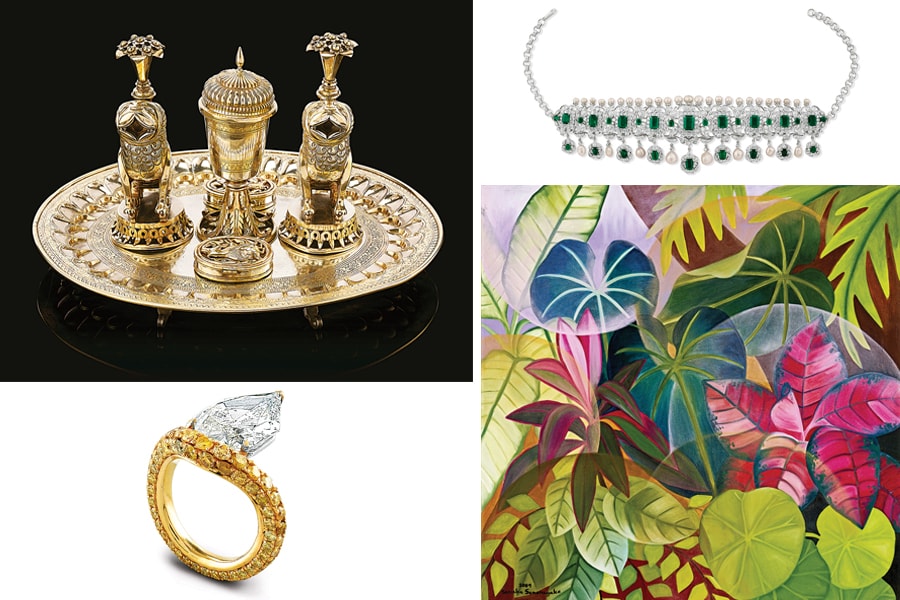Some find it intimidating to bid: AstaGuru's Tushar Sethi
The CEO of AstaGuru Auction House talks about exanding into various categories, choosing artists, and handholding clients during auctions


AstaGuru was established in 2008 as India’s first online-only platform to conduct auctions for Indian, Contemporary and Modern Art. Over the years, it has extended its portfolio manifold and introduced several new categories such as jewellery and fine silver, timepieces, textiles, celebrity memorabilia and vintage cars. Over the past five years, its annual revenue has grown from Rs 95 crore to Rs 300 crore. AstaGuru hosted its 75th auction in July 2022, with its ‘Oppulent Collectibles’, which generated a revenue of Rs 7.5 crore CEO Tushar Sethi talks about the strategies that have led to this success.
Edited excerpts:
Q. What was the portfolio of artworks that AstaGuru started with and how has it evolved?
We started as a contemporary art auction house, with a team of three. In 2005-07, the contemporary market was doing well and the idea was to become a player in this scenario. After the Lehman Brothers collapse in 2008, the markets took a beating and contemporary Indian art also had a shake down, and we tried to move into the masters’ category. But that was not our forte, so we had to take baby steps and understand the market and collectors.
In 2013, we started creating a team with the right people… they diversified into various categories, and took different portfolios forward.
Q. How did you diversify into different categories?
As we understood and grew our clientele, we began to look into and understand various categories. In 2016-17, we did a collectibles’ auction with categories such as jewellery, watches, stamps and other memorabilia. We studied our results to see what our clients were interested in and then broke each kind of item into separate categories, and slowly expanded our base. We have to understand what clients are looking for and as clients also realise that we are doing auctions in those categories, they also keep coming back to us. We also identified the right experts to bring in.

(Clockwise from right) Garden Song by Senaka Senanayake, 2009, inspired by Sri Lankan rainforests Untitled by MV Dhurandhar, oil on canvas, 1922 an antique rosewater silver set yellow diamond ring (bottom)
Q. How do you source and curate your auctions, keeping your clients’ interests in mind?
We started off with our research team, and they started by documenting and archiving everything made by different artists, everything published in books. It helps us understand the artists’ journeys, and we aesthetically look at the important ones and try to get them for the auction. For every auction, we start with a blank slate, and then say that these are the 30-odd artists that we definitely require for it, and let’s try to see which their important works are, and the people who have them.
We do a similar process for other categories. For jewelleries, we connect with erstwhile royal families we don’t look that much for new jewellery which might be more easily available, and try to look for vintage pieces that buyers might be interested in as family heirlooms. In the watches category, we would be looking at brands such as Patek Philippe, Richard Mille and Rolex.

(From left) Rolex Oyster Perpetual Cosmograph Daytona watch Patek Philippe Annual Calendar watch
But this portfolio is small in India: Jewellery and watches combined was Rs30 crore last year. We would like to take this portfolio to Rs210 crore in the next few years. Internationally, these categories are really big markets, but in India people have to still get used to them as collectibles and not just consumer products. Internationally, the biggest auction categories are vintage wine and alcohol, vintage cars, jewellery, memorabilia, numismatics and stamps.
Q. How have clients evolved over time?
Over the last decade, we have grown our clients, and buyers are usually those who are interested in specific categories.
Some clients are not comfortable about bidding or aware of the process they find it intimidating to bid in an auction and might prefer going to a seller and acquiring it directly from them at a specific price. We handhold them through the process, and some clients get comfortable and continue to acquire collectibles.
First Published: Nov 03, 2022, 11:55
Subscribe Now